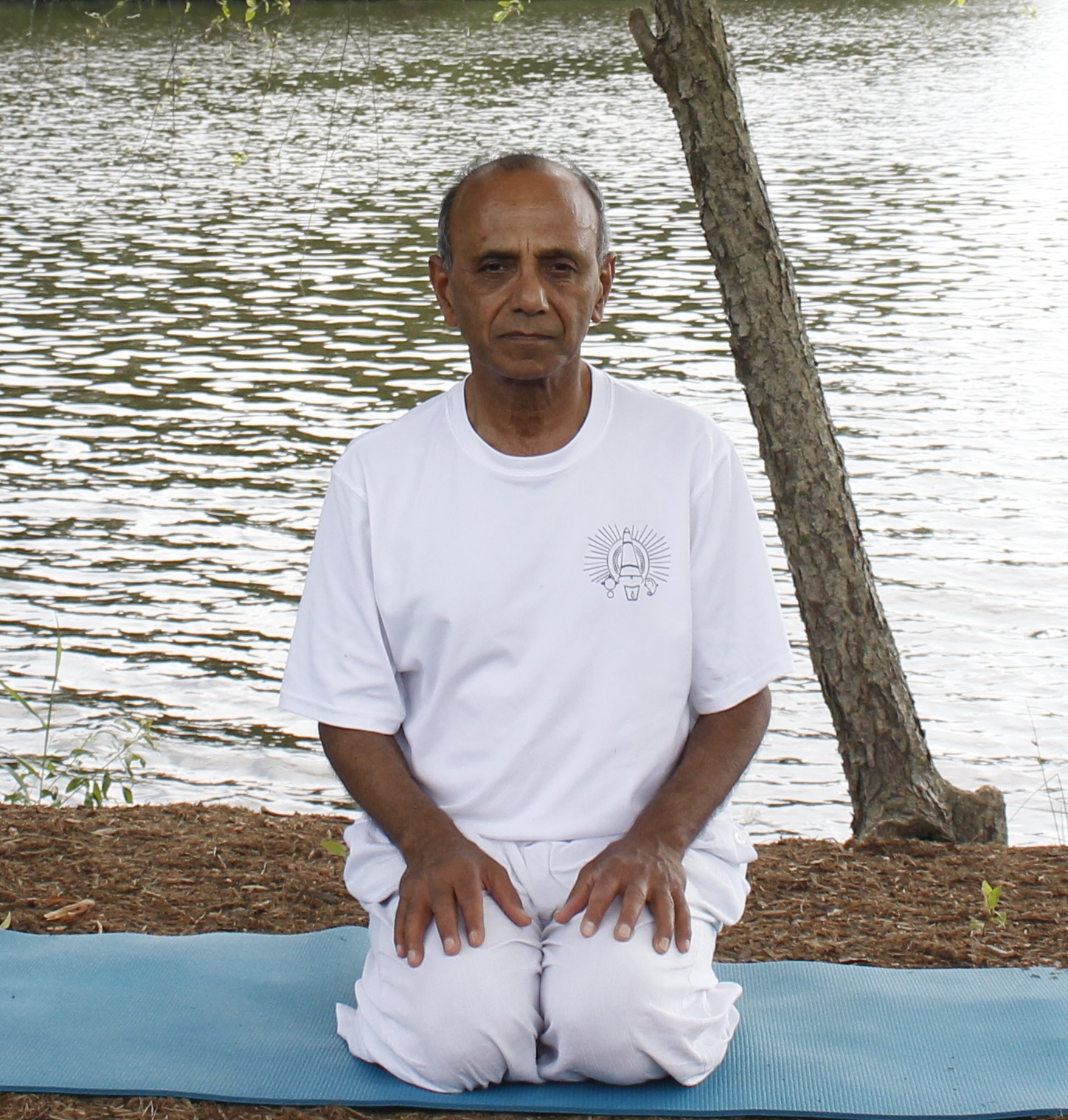
Vajrasana
Quads (short for quadriceps) are the group of four muscles in the top part of the thighs. Quads, in combination with the hamstrings (back of the thigh) provide an excellent support structure both for the knees as well as the spine. Strength and flexibility of the quads can usually translate to healthy knees and a strong spinal column.
Most people pay very little attention to the quads. In fact, many of my students realize how tight their quads are only when they try to do a certain yoga pose which involves these muscles.
In today’s post, I will be presenting a few simple asanas (yoga postures) which will be very helpful in making the quads stronger and more flexible.
Vajrasana (Diamond Pose)
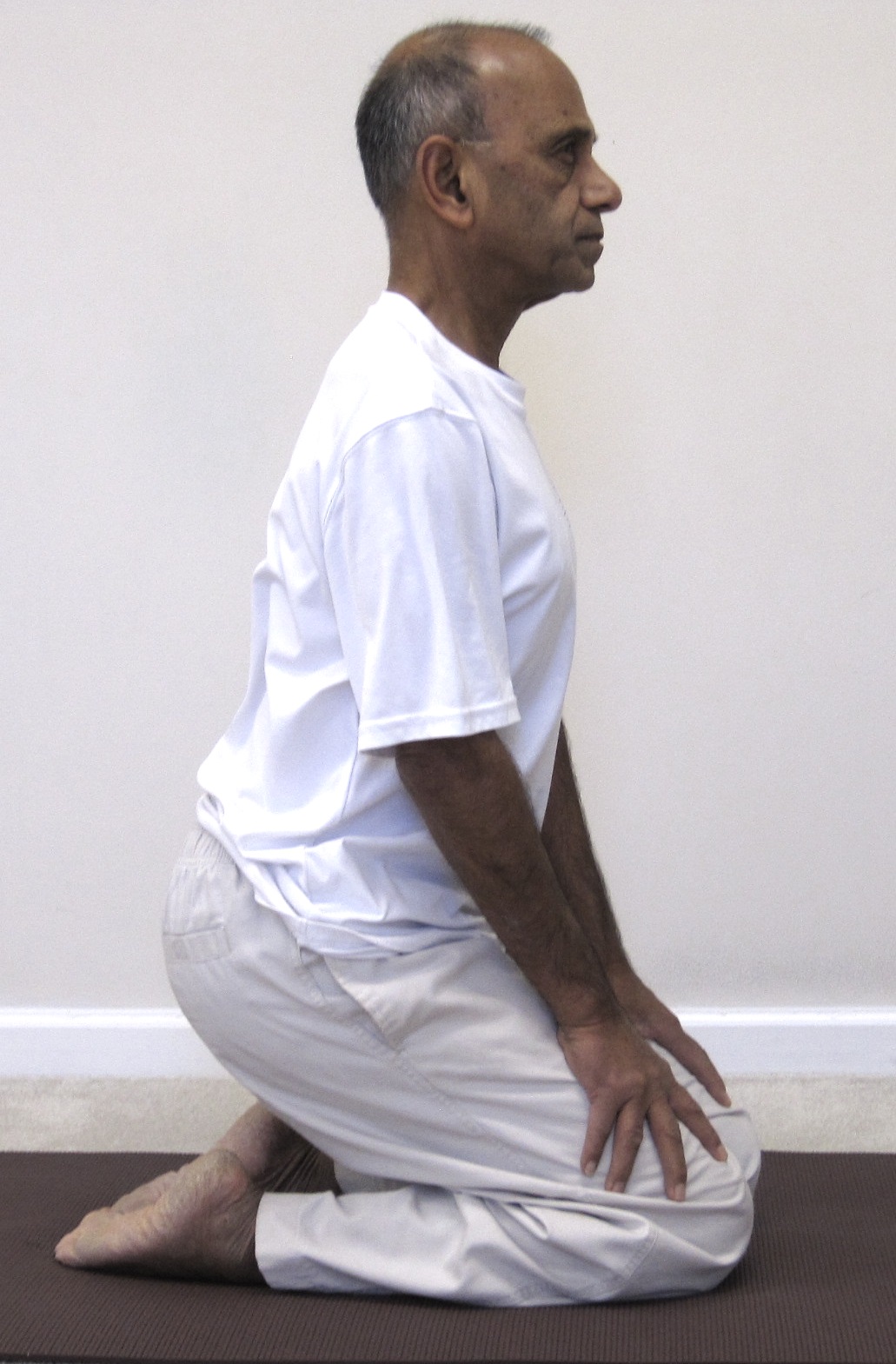
Vajrasana, butts lifted up
Vajrasana is a simple pose and yet challenging for those with tight quads, knees or ankles. The technique is to sit on the heels with the tops of the feet flat on the ground.
If you are not comfortable getting into the pose, you may want to try placing a cushion under the feet. To make it easier, you may additionally place a cushion between your buttocks and heels as well. If even that doesn’t work, you can try sitting on a high bolster and then try to bring the top of the feet on the ground.
Once you are in the pose, it provides a nice stretch for the quads and the ankles.
As a side note, Vajrasana is supposed to help with digestion. So, this becomes the only pose in which you are encouraged to sit in right after your meals.
Vajrasana variation for a deep quad stretch
While sitting in Vajrasana, lift your buttocks about one inch above the heels and hold this position for as long as comfortable. Within a short time you will start feeling a slight burning type sensation in the quad area indicating a deep stretch of the muscles.
Veerasana (Hero Pose)
Veerasana is a variation on the Vajrasana wherein, keeping the knees close to each other, we slide the feet outwards so that the buttocks can rest on the ground instead of on the heels. This pose is even more challenging compared to Vajrasana as it requires greater flexibility in the ankles, knees and the quads. Again, if it is not possible to bring the buttocks to the ground, you may place them on a cushion, a blanket or even a block.
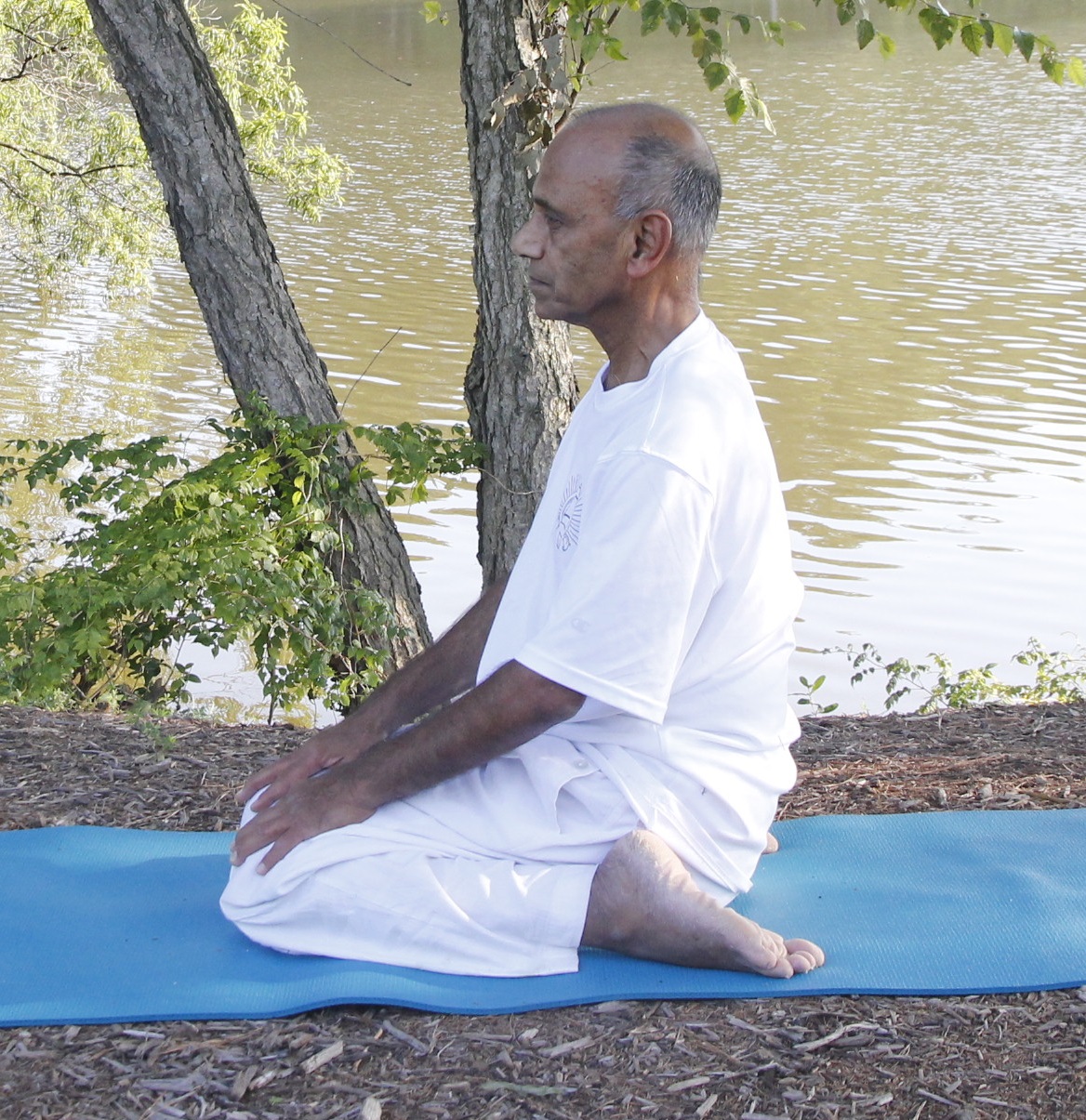
Virasana (Hero Pose)
Supta (Reclining) Vajrasana/Veerasana
Supta Vajrasana or Veerasana takes the quad stretch a step further and deeper. So, if you are unable to sit in either Vajrasana or Veerasana, then obviously you shouldn’t be attempting the reclining version of the pose.
To get into the pose, begin by sitting in Vajrasana or Veerasana. Now, start leaning the torso backwards until you can rest the elbows on the ground behind you. With the forearms resting on the ground, begin to slide the hands toward the feet while at the same time trying to lower the back of the head to the ground. This position is also considered to be a variation on the fish pose (Matsyasana) which is practiced as the counter pose for the Shoulder Stand (Sarvangasana). In this position, the chest is lifted up and you are trying to maintain the knees on the ground and also close to each other.
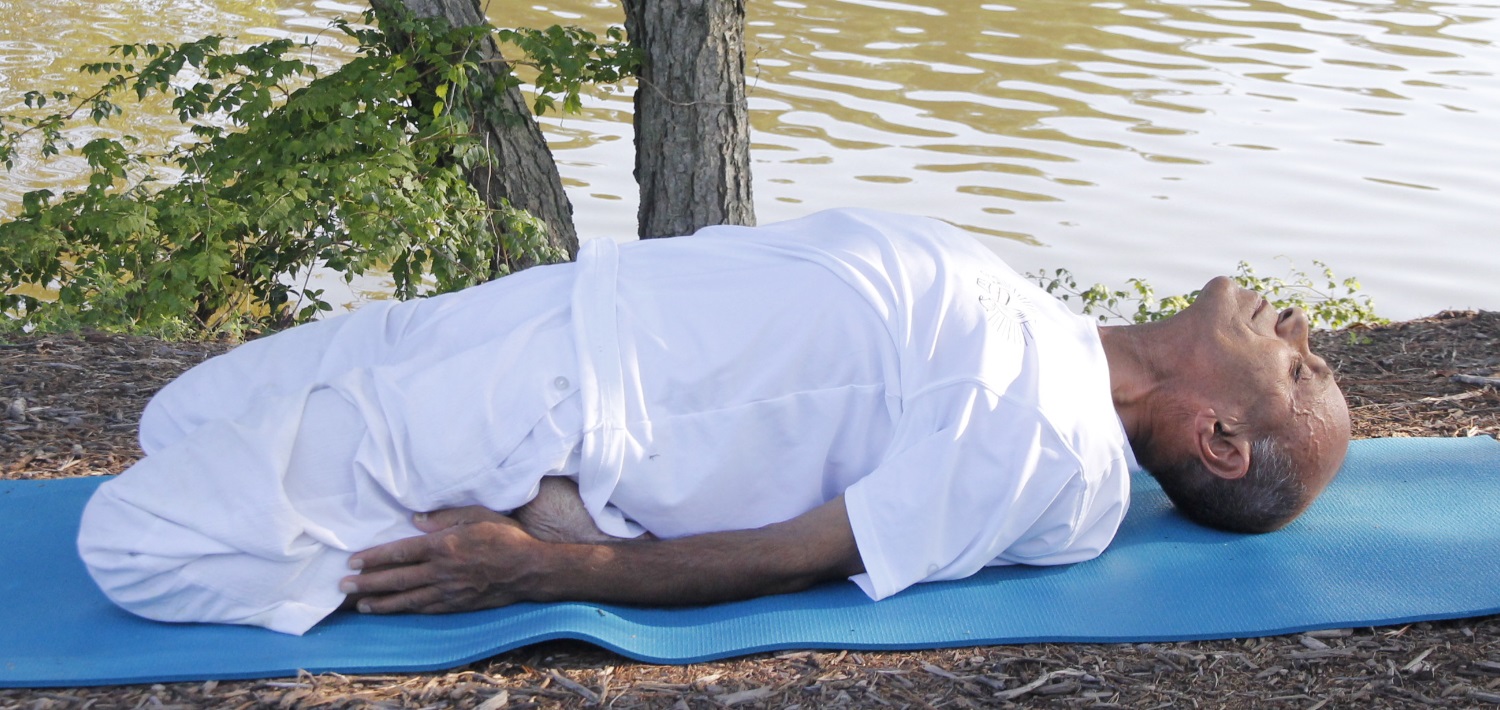
Supta (Reclining) Vajrasana
In a minor variation of the pose, try to slide the shoulders back until the back is fully resting on the ground. As you do that, your knees may come off the floor. Again, the effort is still to keep the knees on the ground and, if possible, close to each other.
This reclining pose provides a deep stretch to the quads, knees and the ankles.
Dynamic Half Camel (Ushtrasana)

Half Camel (Ushtrasana)
This variation is quite similar to one of the Five Tibetan Rites. When practiced as part of these rites, this variation is practiced 21 times. However, as an asana practice, you may like to start out with 3 to 4 rounds and over time build up to 21 rounds.
- Start in the kneeling position. Place the hands on the waist, joining the thumbs together at the soft spot on the lower part of the spine. Throughout the practice, try to maintain the thighs vertical.
- While inhaling, push the thumbs forwards, while tilting the head back, creating an arch in the spine.
- While exhaling, straighten the spine and bring the buttocks on top of the heels.
- There is a normal tendency to bend forward while lowering the buttocks down to the heels. In order to develop strong quadriceps, make an effort to keep the spine vertical, without bending forward, while lowering the buttocks.
- Again, while inhaling, raise the buttocks up, pushing with the thumbs forward, tilt the head back, creating an arch in the spine.
- Repeat the above as many times as comfortable. Finally rest in the Vajrasana.
Camel Pose (Ushtrasana)
Camel Pose (Ushtrasana – उष्ट्रासन) is one of the commonly practiced backward-bending poses. It is an intermediate level back bending pose and stretches both the front and back sides of the body as well as the quads. The Sanskrit word ‘ushtra’ means a camel.
Please visit my blog here for some more optional variations and modifications to the camel pose.
Since the pose provides an intense back stretch, it is advisable to practice it after some of the preparatory poses like cobra, locust, shoulder stand etc.
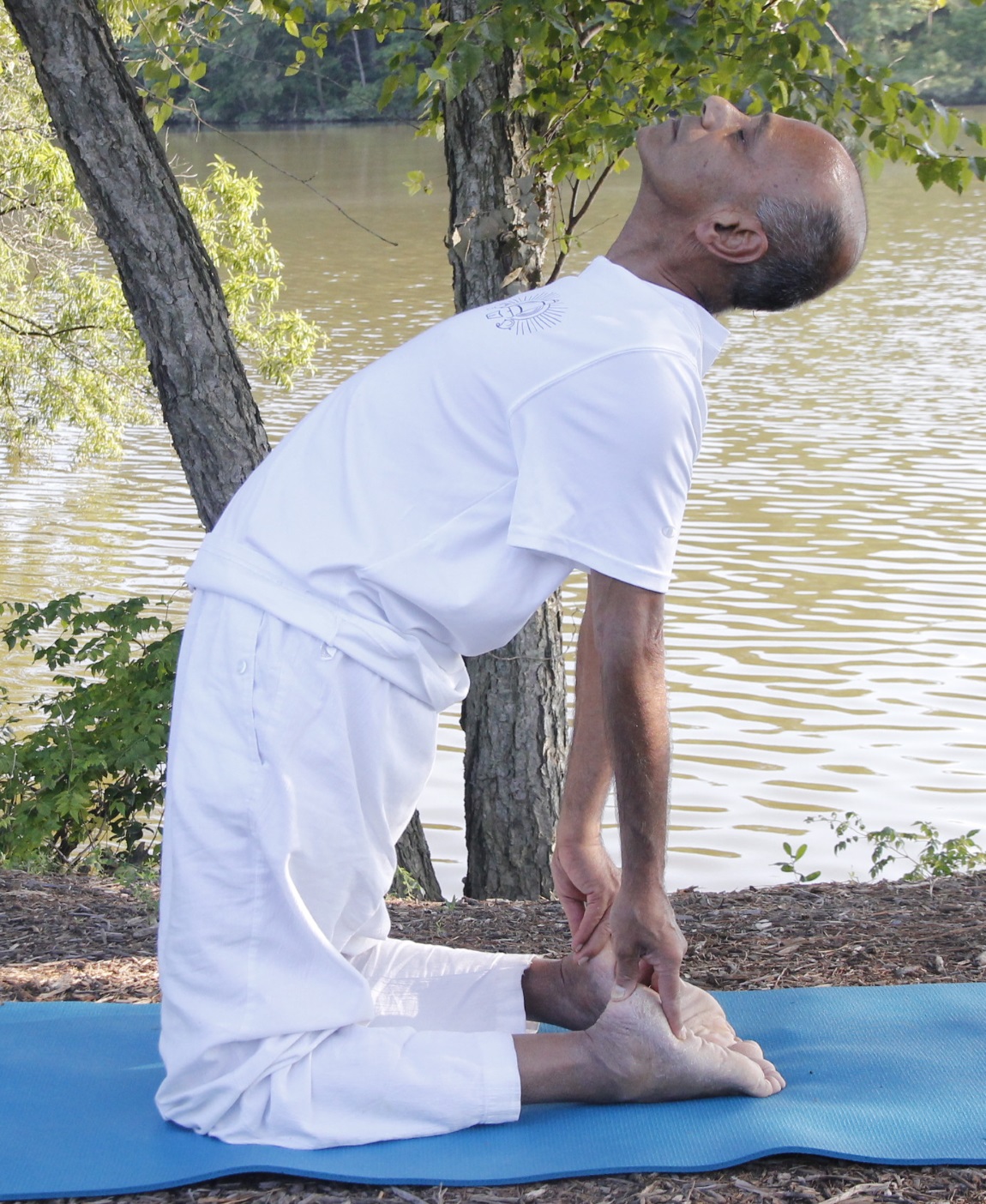
Ushtrasana (Camel Pose)
Step by Step
- Sit on the mat in Vajrasana (Diamond Pose)
- Lift your buttocks up and kneel with your knees hip width apart keeping the thighs vertical. Throughout the pose try to keep the thighs perpendicular to the floor.
- Rest your hands on the buttocks, fingers pointing down. Inhale and lift your chest up by rolling the shoulders back so the shoulder blades are close to each other. Tilt the head back.
- Slide one hand down and try to reach the corresponding heel. Then slide the other hand also, now holding both the heels.
- In the final position, make an effort again to push the buttocks forward so the thighs remain vertical.
- Stay in the final pose for 5 to 6 breaths or as long as comfortable. Relax for a few breaths.
- Repeat the pose two more times.
Stay tuned for part 2 wherein I will be presenting some more amazing asanas for the quads.
[…] Vajra Veerasana With the Hastha Mudra Sequence – Sit in Vajra Asana and then perform vajra veerasana. Bring your left foot forward so that it's flat on the ground with your toes in line with your […]
Thanks Subhash for your comprehensive details on Vajrasana and it’s variations. I enjoy doing this asana. What is your advice to people with mild knee issues?
Thanks.
Hi Dilip, good to hear from you, as always. It is OK to sit in Vajrasana as long as the mild knee issue doesn’t turn into pain. You may also want to do some additional exercises to strengthen the thighs, calf muscles and the knees which will help stabilize the knees and possibly manage the pain better. Call me on Viber sometime.
Hi Subhash, i want to ask if the vajrasana posture should be done with the buttocks sitting on the heels or are the heels a little more on the outside of the hips?